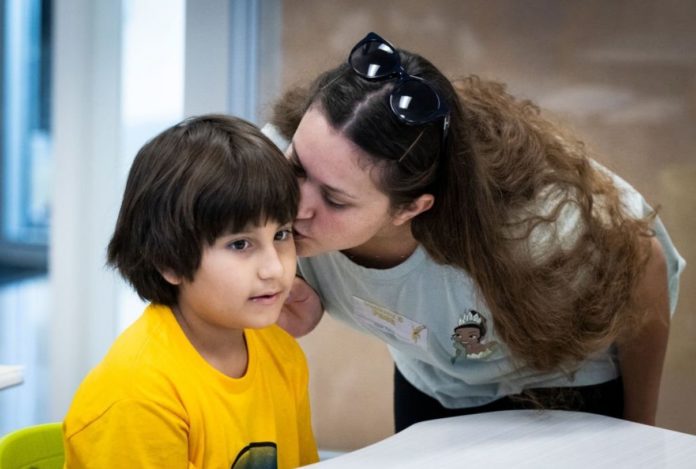An effective teacher is crucial while learning to speak. Take zebra finches as an example. The species’ young learn songs directly from a teacher—typically their father—through social interaction, which keeps them engaged and motivated.
Young birds learn the songs much less effective when they hear them on a speaker without receiving individualized coaching from their teacher.
It has long been unclear how exactly this social aspect of song learning functions. However, Okinawa Institute of Science and Technology (OIST) researchers have now determined the brain circuitry that governs it. Their research was published in Nature Communications.
The study’s principal investigator, Yoko Yazaki-Sugiyama, an associate professor in OIST’s Brain Mechanisms for Critical Period Unit, claims that this is the first evidence of the neural circuitry that directs these animals’ attentional strategies.
According to Dr. Yazaki-Sugiyama, zebra finches are surrounded by a variety of sounds in the wild, including the songs of different species of birds.
According to Dr. Yazaki-Sugiyama, zebra finches are surrounded by a variety of sounds in the wild, including the songs of different species of birds.
Human babies also require a personal guide to help them learn to distinguish the phonemes in language, according to research conducted about 20 years ago on babies. These researchers hypothesized that the social contact kept the students’ attention. The study’s lead author, Dr. Jelena Katic, a postdoc in Neural Mechanisms for Critical Period Unit, explains, “That is pretty logical – if we are attentive, we are learning better. We wanted to understand, is the same true for juvenile birds?”
The locus coeruleus (LC), a region of the brain known to be involved in attention and arousal, was the area on which the researchers concentrated. This region of the brain projects neurons to the caudomedial nidopallium, a higher order auditory region (NCM). Previous research conducted in their lab revealed that this is the location where a juvenile zebra finch forms memories of a tutor’s song.
“We hypothesized that this LC-NCM circuit might be important,” according to Dr. Katic, “but nobody had ever looked at it in juveniles.”
The juvenile, who had never heard a tutor’s song before, first listened to it through a speaker as the researchers observed brain activity in these two locations. Next, the juvenile interacted with the tutor as he sang. Finally, the juvenile once more listened to the tutor’s song through a speaker.
When the instructor sang, both brain regions reacted more strongly than when the students first heard the tape. It’s interesting to note that the student’s reaction to the recording after hearing the tutor sing is improved. It appears that the NCM neurons were registering the auditory information since their activity was time-locked to specific syllables of the tutor’s song. However, LC neurons were consistently active while the tutor was singing, indicating that they were reacting to voice communication rather than the exact notes he was emitting.
In addition, when the tutor sang while engaging in social engagement, the juveniles were unable to effectively duplicate his song if the researchers deactivated the neurons projecting from the LC to the NCM.
“Imagine that the NCM neurons are receiving multiple inputs from different regions of the brain, including some from auditory areas that convey the notes and prosodic patterns of the song,” adds Katic.
However, according to Dr. Katic, “LC is conveying another type of information – the social context identifying that the song is important.”
Researchers are still learning the cues that young children utilize to understand this social situation. However, they propose that this circuit might be crucial at a young child’s formative stages, when song memories are being formed. “If the memories are poorly formed, the bird is not going to be successful in vocally copying them later,” she claims.
Researchers are still discovering more about how this social learning circuit works, including the chemicals it employs and the type of data the LC neurons take in to determine the significance of what a zebra finch hears.
They are also investigating the signals that the kids give off that might persuade the teacher to instruct them.
“This exchange between the juvenile and the tutor is two-directional,” ends Prof. Yazaki-Sugiyama.
Source: 10.1038/s41467-022-32207-1
Image Credit: Getty
You were reading: Parents’ Lessons Matter: “Live” Tutor Drives Learning From His Singing
